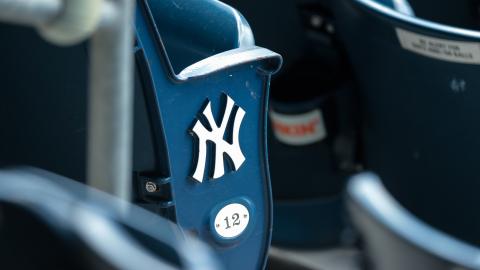In the world of Major League Baseball, there are few prospects as intriguing as Roki Sasaki, the Japanese phenom who has taken the baseball world by storm. With a fastball that touches triple digits, an almost mythical breaking ball, and a resume full of historic feats, Sasaki is one of the most exciting young arms in baseball. Yet despite his immense talent, neither the New York Yankees nor the New York Mets were ever seriously considered frontrunners to sign him when he eventually made the leap to the majors. In a city that prides itself on its dominance in sports and has a deep financial reservoir to make any splash, the absence of both teams from the Sasaki sweepstakes raises some important questions.
How did a pitcher of Sasaki’s caliber—who is being compared to the likes of Shohei Ohtani—fail to land in one of the two largest markets in baseball? Why didn’t the Yankees or Mets pursue him with the same level of aggression as they have with other international stars? Let’s take a deep dive into the reasons why these two powerhouse teams were never seriously considered by Sasaki and his team, and explore the bigger picture of MLB’s international talent landscape.
### Who Is Roki Sasaki?
Roki Sasaki’s rise in Japanese baseball has been meteoric. A product of the Chiba Lotte Marines, Sasaki made his NPB debut at just 18 years old, and since then, he has captured the imagination of scouts and fans alike. His combination of power and finesse on the mound is something rarely seen at such a young age. Sasaki’s 102-mph fastball has been a highlight of his career, and he has a devastating splitter that makes hitters look foolish. However, what truly sets Sasaki apart is his near-perfect game on April 10, 2022, when he threw 19 consecutive strikeouts—a feat unseen in professional baseball for decades.
By 2024, Sasaki was already being compared to the likes of Ohtani in terms of both talent and potential. Yet despite all the buzz surrounding him, Sasaki’s decision to remain in Japan for the foreseeable future, rather than making the jump to MLB right away, has kept his career on a different path than many anticipated.
### The Yankees and Mets: The Obvious Contenders?
When a player of Sasaki’s caliber becomes available, two teams immediately come to mind for American baseball fans: the New York Yankees and the New York Mets. Both teams are major-market juggernauts with massive financial resources and an inherent desire to build championship-caliber teams. If a superstar is out there to be had, it seems logical that the Yankees and Mets, with their enormous payrolls and a history of international signings, would be the ones leading the charge.
For the Yankees, the allure of signing a player like Sasaki would be undeniable. With the Yankees’ consistent push to remain competitive in the AL East, having a future ace like Sasaki would immediately solidify their pitching staff, which has seen its fair share of ups and downs in recent years. The Yankees have a history of going after international talent, whether through big-money signings or scouting the farthest reaches of the globe, making them one of the most aggressive teams when it comes to overseas talent. But Sasaki was never seriously linked to the Yankees in any meaningful way. Despite their usual heavy involvement in the international market, the Yankees’ silence surrounding Sasaki was notable.
The Mets, on the other hand, have been much more aggressive in recent years under owner Steve Cohen’s leadership. Cohen, who purchased the Mets in 2020, quickly demonstrated his intent to make the Mets a powerhouse with lavish spending sprees that landed stars like Francisco Lindor and Max Scherzer. The Mets, too, could have seen Sasaki as a perfect fit to complement their strong starting rotation. With a commitment to international scouting and a track record of signing top-tier players from outside of MLB, the Mets could have positioned themselves as a strong contender for Sasaki’s services. However, the Mets were never front-runners either, even though they are known to spare no expense to improve their roster.
### The Japanese Influence: Why Sasaki Didn’t Pick New York
One of the most significant factors influencing Sasaki’s decision not to consider the Yankees or Mets may stem from cultural and organizational differences. Japanese players, even those with the pedigree of Sasaki, often gravitate toward teams that offer them a sense of comfort, understanding, and opportunity to succeed. Japan has a unique baseball culture that values team success, tradition, and respect for the game, and players from the country often prefer organizations that can support them in adapting to the major leagues both on and off the field.
While both the Yankees and Mets are well-respected franchises, their high-profile, media-centric environments might not have appealed to Sasaki in the same way they attract other international stars. Playing for a New York-based team means living under an intense microscope—one that demands constant media attention and often places an immense amount of pressure on players. Sasaki, who has always been relatively reserved and focused on developing his craft, might have preferred a less intense media market, where he could avoid the constant speculation that accompanies the New York spotlight.
### MLB’s Structural Issues: The Posting System
Another significant obstacle that may have prevented Sasaki from landing in New York is the structure of MLB’s international signing system, particularly the posting system used by Japanese teams. Under this system, MLB teams are required to negotiate with a player’s NPB team and pay a posting fee before entering contract talks with the player. This system has, at times, led to friction between teams in the United States and Japanese organizations, as the financial terms and the process itself are often considered somewhat convoluted.
For a player like Sasaki, who was coming off a dominant stretch in Japan, the posting process could have proven to be less attractive to the Yankees or Mets, who were already focused on acquiring other high-value players. Unlike some of the more straightforward international signings, such as Cuban players or Dominican prospects, Sasaki’s situation required teams to navigate a more intricate and sometimes unpredictable posting process. This could have deterred the Yankees and Mets, who were already busy trying to manage their roster and payroll.
### Competing Interests: Where the Money Went
In addition to the challenges of the posting system, the Yankees and Mets may have simply been outbid by other suitors or focused their resources elsewhere. The Mets, for example, have already committed substantial resources to other areas of their roster, including high-priced pitchers and position players. Likewise, the Yankees, always trying to balance short-term success with long-term roster construction, may have decided to focus their attention on different prospects or more immediate needs. In the world of MLB free agency and international signings, every team has a budget, and sometimes that budget doesn’t align with a superstar’s asking price.
### A Missed Opportunity?
Looking back, the failure of the Yankees and Mets to be serious contenders for Sasaki seems like a missed opportunity for both teams, but also a sign of the broader complexity in navigating MLB’s international market. Sasaki’s potential to be an ace for any team is undeniable, and teams like the Yankees and Mets could have built their future around his unique talents. But factors like cultural differences, the structure of international signings, and competing priorities led to these two iconic franchises being on the periphery of Sasaki’s MLB journey.
As the landscape of international baseball continues to evolve, teams like the Yankees and Mets may need to reassess their approach to signing Japanese players of Sasaki’s caliber. The next time a Japanese star emerges, the pressure will be on them to ensure they don’t miss out again.



